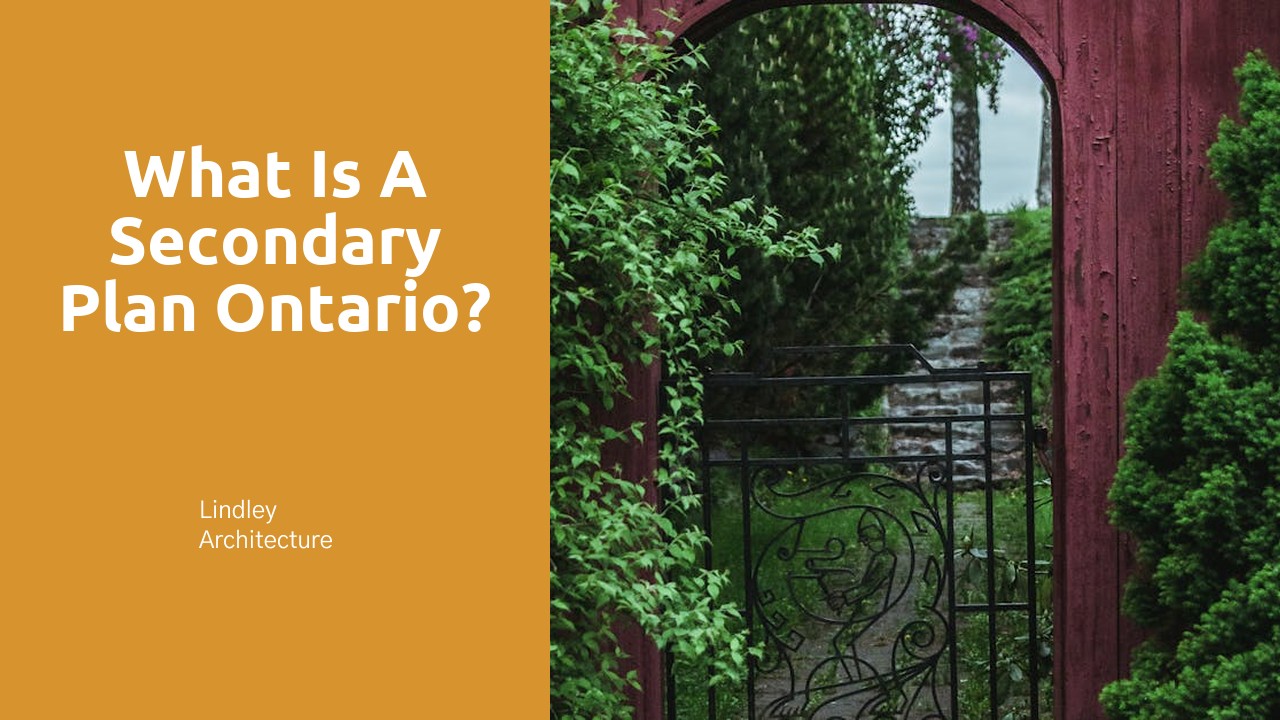
Table Of Contents
Benefits of Secondary Plans for Sustainable Growth
Secondary plans play a crucial role in promoting sustainable growth in Ontario, particularly by guiding land use and development in a strategic manner. These plans help to ensure that urban areas are developed in a manner that balances the needs of the community with environmental considerations. By delineating specific land uses and zoning regulations, secondary plans contribute to efficient land use management and foster a sense of community cohesion by creating well-defined neighbourhoods. Master Planning in Oshawa, for instance, has successfully leveraged secondary plans to promote sustainable growth by focusing on mixed-use developments, green spaces, and infrastructure improvements that cater to the needs of both current and future residents.
Furthermore, secondary plans support long-term economic viability by attracting investment and fostering a business-friendly environment. By providing a clear framework for development, these plans streamline the decision-making process for developers, local authorities, and residents alike. This clarity helps to reduce uncertainty and risks associated with development projects, leading to increased investor confidence and ultimately spurring economic growth in the region. In essence, the benefits of secondary plans for sustainable growth are not only limited to environmental considerations but extend to economic prosperity and community well-being as well.
Balancing Economic Development and Environmental Concerns
Balancing economic development with environmental concerns is a critical aspect of secondary planning in Ontario. The province's commitment to sustainable growth necessitates a thoughtful approach that considers both economic prosperity and ecological preservation. One notable example of this delicate balance is seen in Master Planning in Oshawa, where municipal authorities have successfully navigated the intricate relationship between urban development and environmental conservation.
The integration of green spaces, efficient infrastructure, and sustainable building practices in the Master Planning in Oshawa demonstrates the pragmatic approach required to address the dual priorities of economic growth and environmental protection. By incorporating green design principles into development projects, the city is setting a precedent for other regions in Ontario to follow.
Challenges in Implementing Secondary Plans in Ontario
Challenges are inherent in implementing secondary plans in Ontario, particularly when it comes to addressing conflicting interests and legal issues. One such example can be seen in the case of Master Planning in Kleinburg, where developers, local governments, and environmental groups often hold diverging views on how to proceed with land use and zoning regulations. The complexities of accommodating various stakeholders' desires while adhering to legal constraints can lead to prolonged decision-making processes and potential conflicts that hinder the smooth execution of secondary plans.
Moreover, the intricate nature of balancing economic development and environmental concerns poses a significant challenge in implementing secondary plans in Ontario. In the context of Master Planning in Kleinburg, ensuring sustainable growth while preserving the natural environment and cultural heritage of the area requires a delicate equilibrium that is hard to achieve. Striking a balance between promoting economic progress and safeguarding environmental resources demands a strategic approach that considers the long-term implications of development decisions on the community and ecosystem.
Addressing Conflicting Interests and Legal Issues
Addressing conflicting interests and legal issues is a crucial aspect of implementing secondary plans in Ontario. One of the main challenges that arise is the need to balance the desires of various stakeholders, such as developers, environmental advocates, and local residents. Master Planning in Clarington, for example, involved extensive negotiations to ensure that the plan met the diverse needs of the community while also adhering to legal requirements and environmental regulations.
Legal issues can often complicate the process of implementing secondary plans. Ensuring that the plan aligns with existing zoning laws, official plans, and provincial policies is essential to avoid potential conflicts or delays. In the case of Master Planning in Clarington, legal experts played a key role in reviewing the plan to identify any potential legal challenges and ensure that it was in compliance with all relevant legislation.
Case Studies of Successful Secondary Plan Implementation
Case studies of successful secondary plan implementation in Ontario provide valuable insights into the positive outcomes that can be achieved through strategic urban development. One notable example is the Master Planning in Clarington, where a comprehensive secondary plan was successfully executed to guide the growth and development of the area. Through a collaborative effort between local government officials, urban planners, and community stakeholders, the secondary plan in Clarington has fostered sustainable growth while preserving the natural environment and enhancing the quality of life for residents.
The Master Planning in Clarington has effectively balanced economic development with environmental concerns, ensuring that new developments align with the community's values and long-term vision. By identifying key areas for growth and establishing guidelines for land use and infrastructure development, the secondary plan has helped create a vibrant and resilient community that thrives in a changing economic landscape. The success of this case study underscores the importance of comprehensive planning and stakeholder engagement in achieving sustainable urban development goals.
Positive Outcomes for Local Communities
Positive Outcomes for Local Communities can be seen through the effective implementation of secondary plans in various regions across Ontario. Master Planning in Kleinburg, for instance, has led to the creation of vibrant mixed-use communities that offer a high quality of life for residents. The establishment of green spaces, recreational areas, and well-connected transportation systems has enhanced the sense of community and well-being among the local population.
Furthermore, the implementation of secondary plans has boosted economic development in these communities. In Kleinburg, for example, the carefully crafted secondary plan has attracted businesses, investors, and visitors, thus stimulating the local economy and creating employment opportunities. This economic growth not only benefits the residents directly but also contributes to the overall prosperity and sustainability of the region.
FAQS
What is a secondary plan in Ontario?
A secondary plan in Ontario is a land-use planning tool that provides detailed policies and guidelines for the development and growth of specific areas within a municipality.
How are secondary plans beneficial for sustainable growth in Ontario?
Secondary plans in Ontario help to ensure sustainable growth by guiding development in a way that balances economic, social, and environmental considerations. They promote efficient land use and help create vibrant and livable communities.
What are some of the challenges in implementing secondary plans in Ontario?
Challenges in implementing secondary plans in Ontario may include addressing conflicting interests among stakeholders, navigating legal issues, ensuring community engagement, and coordinating with various levels of government.
How do secondary plans in Ontario balance economic development and environmental concerns?
Secondary plans in Ontario aim to balance economic development and environmental concerns by promoting smart growth principles, encouraging mixed land uses, protecting natural areas, and promoting sustainable transportation options.
Can you provide examples of successful implementation of secondary plans in Ontario?
Yes, there are several case studies of successful secondary plan implementation in Ontario, where communities have seen positive outcomes such as revitalized urban areas, improved infrastructure, enhanced public spaces, and increased property values.






